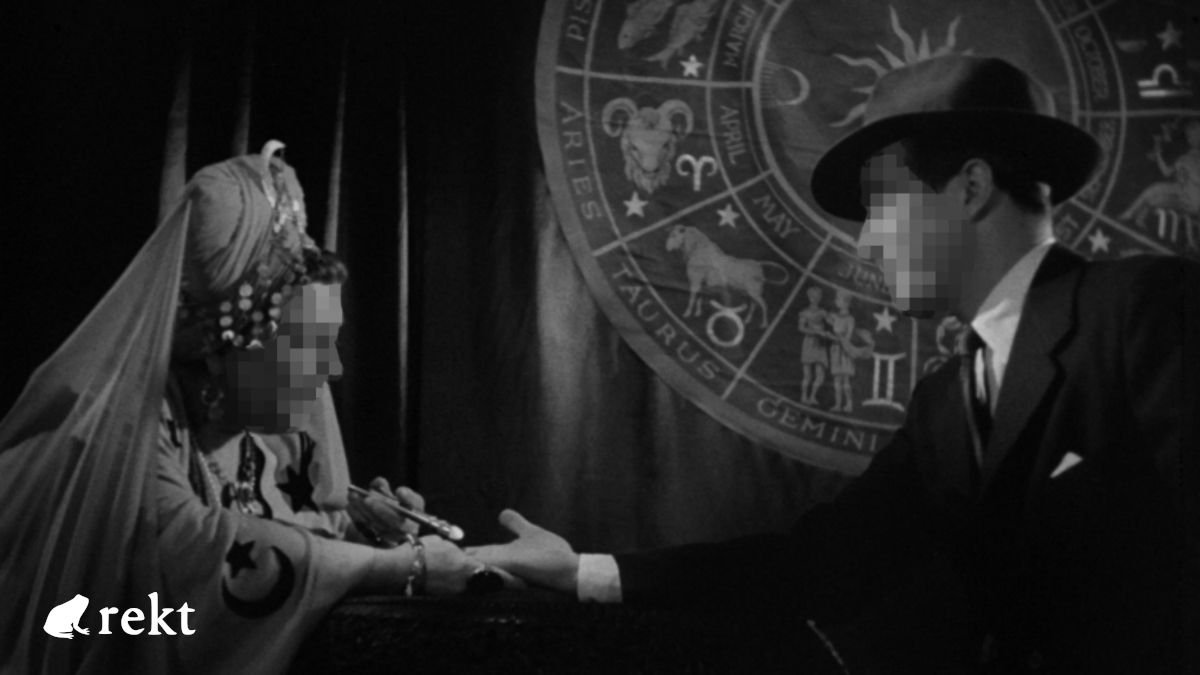Alpha Finance - REKT

What follows is one of our most dramatic stories yet.
A tale of fake magic, confusion and accusation leading to the biggest DeFi hack to date.
~$37.5 million was stolen in a complex piece of DeFi deception, as a multi transaction attack was used to raid the vaults of Alpha Finance, whilst leaving many believing that it was the Iron Bank that had been affected.
This murder took place in a hall of mirrors. The increasingly intertwined nature of DeFi protocols, combined with the complexity of the attack, left the community confused as to who the real victim was, and who was responsible for making reparations.
The attackers' contract made the Homora code “believe” that their malicious contract was one of their own in order to manipulate internal debt numbers in their system.
This was a private battle between protocol and attacker. The exploited contract was not yet announced, nor was it available to users, meaning they were not directly affected. We have not yet seen such a blatant inside job, and Alpha Finance were quick to point out that they had a “prime suspect”.
Why was the contract left on mainnet if it was not yet ready? We asked Alpha Finance, who told us;
"We launched several pools e.g. sUSD on the contract level and not the UI because we were preparing to launch new pools including sUSD that coming week"
Large players quickly moved to preserve their capital amidst the confusion. SBF withdrew $400 million of FTT from Cream Finance, and Three Arrows Capital sent over $3 million of $ALPHA to Binance, where the only purpose could be to sell.
All tokens related to the attack decreased in value.
The Alpha Homora governance token ALPHA fell from $2.25 to $1.78.
The Iron Bank governance token CREAM fell from $288.32 to $193.51. AAVE, the governance from the home of the controversial flash loan which has enabled so many attacks of this nature, fell from $518 to a low of $492 later in the day.
However, token pricing is not the most interesting aspect of this story...

The Alpha Finance team built an excellent post-mortem, and what they found was startling. The implications of our joint investigation suggest a depth of corruption much worse than expected.
Whether Alpha Finance goes public with their accusations remains to be seen, but their initial statement of having a prime suspect suggests that repercussions are coming.
From the official post-mortem, we can see that the attacker needed to know the following in order to carry out the attack:
- HomoraBankv2 has an sUSD pool on a contract level in preparation for the upcoming release, which is neither available on the UI nor publicly announced.
- There was no liquidity in sUSD lending pool, so the attacker can fully manipulate and inflate the total debt amount and total debt share.
- There is a rounding miscalculation in the borrow function calculation, which only affects when the attacker is the sole borrower.
- resolveReserve function can increase totalDebt without increasing totalDebtShare and the function, intended for collecting revenue to the reserve pool, can indeed be called by anyone.
- HomoraBankv2 accepts any custom spell, as long as the invariant checks out that collateral > borrow (a spell is similar to a strategy in Yearn).
With so many users watching on, the robbers left a clear trail of clues, and in a rare move of counter-aggression, the victims have singled out their attacker.
The above requirements prove that insider information was required in order to carry out this attack. However, due to the range of protocols and audit firms involved, the insider could have come from several different angles.
rekt is no longer in the business of making accusations, but we look forward to seeing how Alpha Finance handle the situation.
How it happened according to Alpha Finance:
1. The attacker created an evil spell (equivalent to Yearn’s strategy). https://etherscan.io/tx/0x2b419173c1f116e94e43afed15a46e3b3a109e118aba166fcca0ba583f686d23
2. Attacker swaps ETH -> UNI, and supplies ETH + UNI to the Uniswap pool (obtaining ETH/UNI LP token). In the same tx, swaps ETH -> sUSD on Uniswap and deposits sUSD to Cream’s Iron Bank (getting cysUSD) https://etherscan.io/tx/0x4441eefe434fbef9d9b3acb169e35eb7b3958763b74c5617b39034decd4dd3ad
3. Call execute to HomoraBankV2 using the evil spell (creating position 883), performing: Borrow 1000e18 sUSD Deposit UNI-WETH LP to WERC20, and use as collateral (to bypass the collateral > borrow check) In the process, the attacker has 1000e18 sUSD debt shares (because the attacker is the first borrower) https://etherscan.io/tx/0xcc57ac77dc3953de7832162ea4cd925970e064ead3f6861ee40076aca8e7e571
4. Call execute to HomoraBankV2 using the evil spell again (to position 883), performing: Repay 1000000098548938710983 sUSD (actual debt with interest accrued is 1000000098548938710984 sUSD), resulting in a repay share of 1 less than the total share. As a result, the attacker now has 1 minisUSD debt and 1 debt share. https://etherscan.io/tx/0xf31ee9d9e83db3592601b854fe4f8b872cecd0ea2a3247c475eea8062a20dd41
5. Call resolveReserve on sUSD bank, accruing 19709787742196 debt, while totalShare remains 1. Current state: totalDebt = 19709787742197, while totalShare = 1 https://etherscan.io/tx/0x98f623af655f1e27e1c04ffe0bc8c9bbdb35d39999913bedfe712d4058c67c0e
6. Call execute to HomoraBankV2 using the evil spell again, performing (repeat 16 times, each time doubling the borrowed amount): Borrow 19709787742196 minisUSD and transfer to the attacker (doubling each time, since totalDebt doubles each time the borrow is successful). Each borrow is 1 less than the totalDebt value, causing the corresponding borrow share = 0, so the protocol treats this as no debt borrowing. At the end of tx, the attacker deposits 19.54 sUSD to Cream’s Iron Bank. https://etherscan.io/tx/0x2e387620bb31c067efc878346742637d650843210596e770d4e2d601de5409e3
7. Continue the process: call execute to HomoraBankV2 using the evil spell again, performing (repeat 10 times, each time doubling the borrowed amount). At the end of tx, the attacker deposits 1321 sUSD to Cream’s Iron Bank. https://etherscan.io/tx/0x64de824a7aa339ff41b1487194ca634a9ce35a32c65f4e78eb3893cc183532a4
8. Flashloan from Aave (borrowing 1,800,000 USDC) Swap 1,800,000 USDC to 1,770,757.56254472419047906 sUSD, and deposit to Cream to have enough liquidity for the attacker to borrow using the custom spell Continued doubling the sUSD borrow from 1,322.70 sUSD to 677,223.15 sUSD (total of 10 times). Swap 1,353,123.59 sUSD to 1,374,960.72 USDC on Curve Borrow 426,659.27 USDC from Cream (since the attacker deposited sUSD already in step b.) https://etherscan.io/tx/0x7eb2436eedd39c8865fcc1e51ae4a245e89765f4c64a13200c623f676b3912f9
9. Repeat step 8, but with ~10M USDC (no USDC borrowing at the end) https://etherscan.io/tx/0xd7a91172c3fd09acb75a9447189e1178ae70517698f249b84062681f43f0e26e
10. Repeat with 10M USDC (no USDC borrowing at the end) https://etherscan.io/tx/0xacec6ddb7db4baa66c0fb6289c25a833d93d2d9eb4fbe9a8d8495e5bfa24ba57
**11.**Borrow 13,244.63 WETH + 3.6M USDC + 5.6M USDT + 4.26M DAI Supply the stablecoins to Aave (to get aTokens, so USDC & USDT can’t be frozen) Supply aDAI, aUSDT, aUSDC to Curve a3Crv pool https://etherscan.io/tx/0x745ddedf268f60ea4a038991d46b33b7a1d4e5a9ff2767cdba2d3af69f43eb1b
12. Add a3Crv LP token to Curve’s liquidity gauge https://etherscan.io/tx/0xc60bc6ab561af2a19ebc9e57b44b21774e489bb07f75cb367d69841b372fe896
13. The rest of txs are supplying to Tornado Cash, GitCoin Grants. 1k ETH is sent to each of Cream’s and Alpha’s deployer addresses.

This story is unique in it’s casting.
We have always expected some ambiguity and role reversal when it comes to white hat / black hat activity, but rarely do we see such clear accusations from the victim.
Andre Cronje, who partnered Yearn with Alpha Homora just weeks earlier, today wrote of the attack:
Take the time to study the exploit. 9 transactions. 4 different manipulations. One including an exact debt calculation. This took teams of researchers hours to figure out. Alpha took immediate steps to mitigate the exploit. It was addressed within minutes of original discovery.
The setup is absolutely insane. No way this could be found by someone casually looking at the contracts, especially the unannounced stuff.
Perhaps this will lead to another Yearn acquisition; Cronje’s name is mentioned 4 times in the post-mortem, and the pattern does seem familiar...

As the list of possible suspects is so small, it becomes easier to rule out and track down potential attackers, in this case the list is even smaller than usual.
“Don’t trust, verify” is an excellent mantra when working with code, yet it does not prevent the increasing social paranoia that must be growing in the upper circles of decentralised finance. We’re living through a period of unprecedented growth for cryptocurrency and DeFi, where the cost of not working is incredibly high. The mental load for DeFi developers grows heavier day by day.
Empires are being built upon lines of code, and the future of finance is being constructed before our eyes.
Developers are locked in a race to the sky while corrupt insiders help hackers to work underground, picking holes in their foundations.
When one tower falls, the others look on and learn. Before the dust has even settled, the crowds have moved on, and relentless teams return to the race in a quest to build back stronger.
How long can they maintain this intensity before the inevitable mistake causes their cloak of anonymity to fall?

REKT serves as a public platform for anonymous authors, we take no responsibility for the views or content hosted on REKT.
donate (ETH / ERC20): 0x3C5c2F4bCeC51a36494682f91Dbc6cA7c63B514C
disclaimer:
REKT is not responsible or liable in any manner for any Content posted on our Website or in connection with our Services, whether posted or caused by ANON Author of our Website, or by REKT. Although we provide rules for Anon Author conduct and postings, we do not control and are not responsible for what Anon Author post, transmit or share on our Website or Services, and are not responsible for any offensive, inappropriate, obscene, unlawful or otherwise objectionable content you may encounter on our Website or Services. REKT is not responsible for the conduct, whether online or offline, of any user of our Website or Services.
you might also like...
The Whitepaper
Few survive the harsh conditions of this dry and technical document. The ICO boom of 2017 destroyed the atmosphere of the whitepaper. Nostalgia tells a tale - we reminisce with Cronje
yCredit the Ape
Cronje doesn’t build for speculators, yet his new code seems to be used for speculation and nothing else. The Cronje audit process sees him throw unfinished products to the apes, who gladly feast on whatever token is thrown their way.
The Return of Cronje
The weary alchemist has been drawn out from recluse, and has brought with him yet another book of unfinished code.
